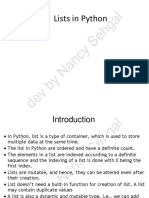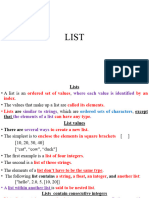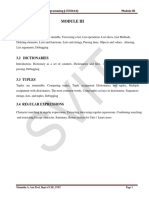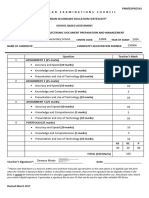0% found this document useful (0 votes)
2 views43 pagesLists in Python
The document provides an overview of Python lists, including their creation, mutability, and various operations such as concatenation, indexing, and slicing. It also covers built-in functions for list manipulation, such as append, extend, and sort. Additionally, it explains how to access list elements and perform membership testing.
Uploaded by
anaghacomputerCopyright
© © All Rights Reserved
We take content rights seriously. If you suspect this is your content, claim it here.
Available Formats
Download as PDF, TXT or read online on Scribd
0% found this document useful (0 votes)
2 views43 pagesLists in Python
The document provides an overview of Python lists, including their creation, mutability, and various operations such as concatenation, indexing, and slicing. It also covers built-in functions for list manipulation, such as append, extend, and sort. Additionally, it explains how to access list elements and perform membership testing.
Uploaded by
anaghacomputerCopyright
© © All Rights Reserved
We take content rights seriously. If you suspect this is your content, claim it here.
Available Formats
Download as PDF, TXT or read online on Scribd
/ 43


































































































